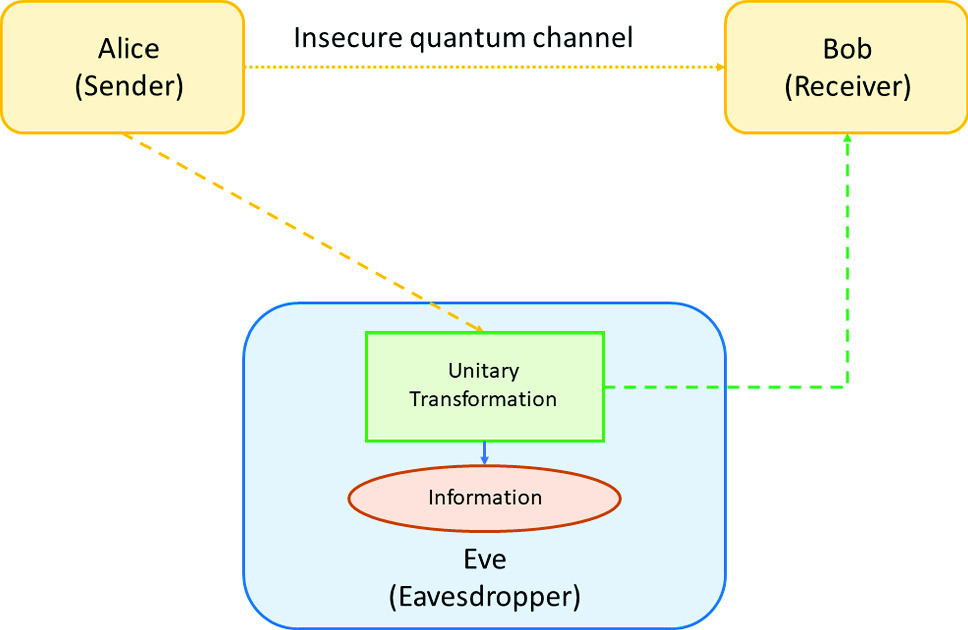https://doi.org/10.1140/epjd/s10053-024-00934-3
Regular Article – Quantum Information
Modified six-state cryptographic protocol with entangled ancilla states
Department of Applied Mathematics, Delhi Technological University, 110042, Delhi, India
Received:
31
August
2024
Accepted:
8
November
2024
Published online:
4
December
2024
In a realistic situation, it is very difficult to communicate securely between two distant parties without introducing any disturbances. These disturbances might occur either due to external noise or may be due to the interference of an eavesdropper. In this work, we consider and modify the six-state Quantum Key Distribution (QKD) protocol in which Eve can construct the unitary transformation that make all ancilla states entangled at the output, which is not considered in Bruss’s work [29]. Using the above proposed modification, we would like to study the effect of entangled ancilla states on the mutual information between Alice and Eve. To achieve this task, we calculate the mutual information between Alice and Bob and Alice and Eve and identify the region where the secret key is generated even in the presence of Eve. We find that, in general, the mutual information of Alice and Eve depends not only on the disturbance D but also on the concurrence of the ancilla states. We show that the entanglement of the ancilla states helps in generating the secret key in the region where Bruss’s six-state QKD protocol failed to do so. We have further shown that it is possible to derive the disturbance-free mutual information of Alice and Eve, if Eve manipulates her entangled ancilla state in a particular manner. Thus, in this way, we can show that a secret key can be generated between Alice and Bob even if the disturbance is large enough.
Copyright comment Springer Nature or its licensor (e.g. a society or other partner) holds exclusive rights to this article under a publishing agreement with the author(s) or other rightsholder(s); author self-archiving of the accepted manuscript version of this article is solely governed by the terms of such publishing agreement and applicable law.
© The Author(s), under exclusive licence to EDP Sciences, SIF and Springer-Verlag GmbH Germany, part of Springer Nature 2024
Springer Nature or its licensor (e.g. a society or other partner) holds exclusive rights to this article under a publishing agreement with the author(s) or other rightsholder(s); author self-archiving of the accepted manuscript version of this article is solely governed by the terms of such publishing agreement and applicable law.





